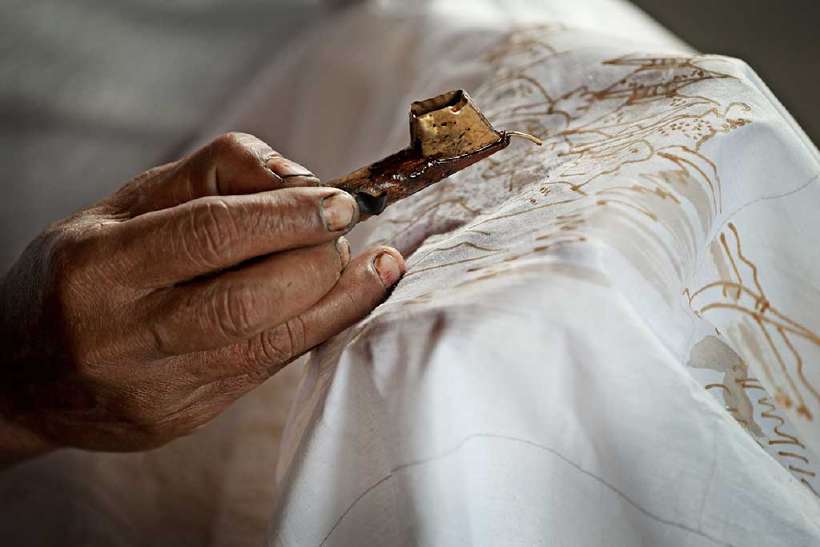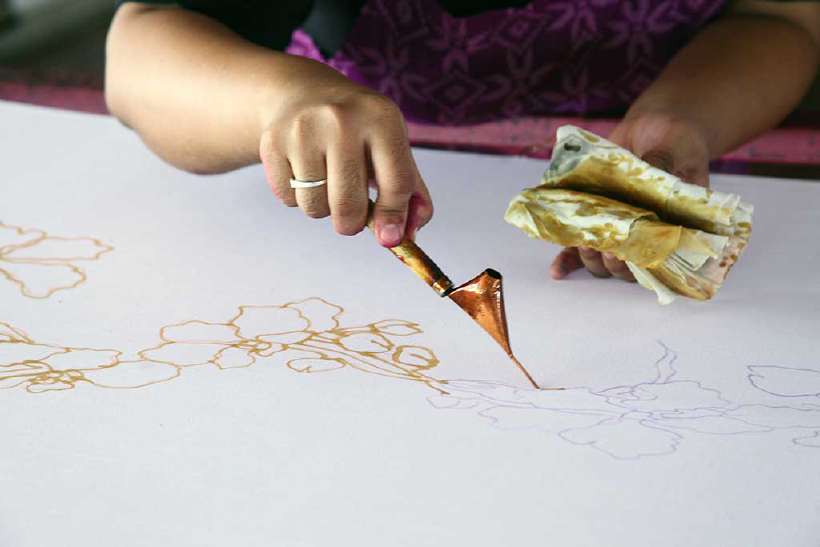Batik: Ancient Art of Painting in Wax
Home / Non Fiction for Kids / Features for Kids / Batik: Ancient Art of Painting in Wax
A routine college day. We had to go for textile practicals after lunch. Going for any class post lunch was a pain. All we wanted to do was sleep. But, that remained a dream since we were always packed with classes after lunch. Lazily, I dragged myself to the textile laboratory.
“Today we are going to learn the technique of batik but first let me brief you about it,” said the teacher.
I was already bored. First theory and then the practical. What more could one ask for! Who wanted to know about a technique of dyeing with the strange name batik, anyway? Then I put aside these thoughts and decided to listen. After all, I would have to attempt it myself in a while.
What followed took me by surprise. A most fascinating journey through different lands down the ages as the teacher unpeeled layer after layer of the beautiful secrets of batik.

The art is believed to be more than a 1000 years old as evidence in the form of dyed fabric has been found in India, Egypt, China, Japan and Turkey. For a very long time, Indonesia has been recognised to be the seat of batik.
The word batik itself is of Indonesian origin and means ‘wax writing’.

Nowadays, blocks made of copper are used to print patterns. These copper blocks or stamps are called ‘caps’ (pronounced as chops in Indonesian). They make the process faster. Each cap is made by twisting and bending a 1.5 centimetre copper strip in the shape of the pattern required. These are then soldered to another copper strip which is used as a handle.
After the pattern is made, wax is applied to the areas where the colour is not needed. This is done using a small copper container with a long slender spout called canting. Canting is believed to be a purely Javanese invention. Melted wax is filled in the copper container and then applied to the cloth.
While the artist is at work, he keeps a container full of melted wax constantly on the flame by his side. Generally, beeswax mixed with petrol-based paraffin wax is used.
 / [Shutterstock.com](http://www.shutterstock.com/?cr=00&pl=edit-00)](/media/indonesia-batik-textile-sample_hu326164ad2df1dc69896db6f58e1b0e0b_204748_820x0_resize_q60_box.jpg)
In India the wax is applied with the help of a brush, mostly.
After the application of the wax, the cloth is dipped into the desired colour. The portions that are covered with wax remain in their original form while the rest of the cloth gets dyed. The cloth is then immersed in cold water to harden the wax. It is finally left to dry. The process is repeated if more than one colour is used.
After the dyeing is complete, the cloth is immersed in boiling water which melts the wax. It is then that the batik pattern surfaces.
To get the marble paper effect, the wax is deliberately cracked before placing the cloth in the dye bath. The dye seeps into the tiny cracks and creates fine lines.
The number of colours used indicate the number of times the cloth has been dyed. Traditionally, blue, brown and red colours were used in batik, but now several others are used as well. Batik fabrics are used to make anything and everything in India today – from shirts and tops to bedspreads, scarves, tablecloths…the themes vary from abstract paintings to mythological figures.
By the time the teacher ended his lecture, I was sitting erect in class, and was very excited. I was impatient to put my own stamp of batik on a fabric. I did, too. How successful was I at it, you’d want to know? Well, that is another story.
634 words |
6 minutes
Readability:
Grade 5 (10-11 year old children)
Based on Flesch–Kincaid readability scores
Filed under: features
Tags: #india, #copper, #indonesia, #fabric, #textile, #artists, #batik, #patterns
You may also be interested in these:
The Magic Carpet
The Story of Indian Bronzes
Alpana
Festive Layers
Basket-making in India